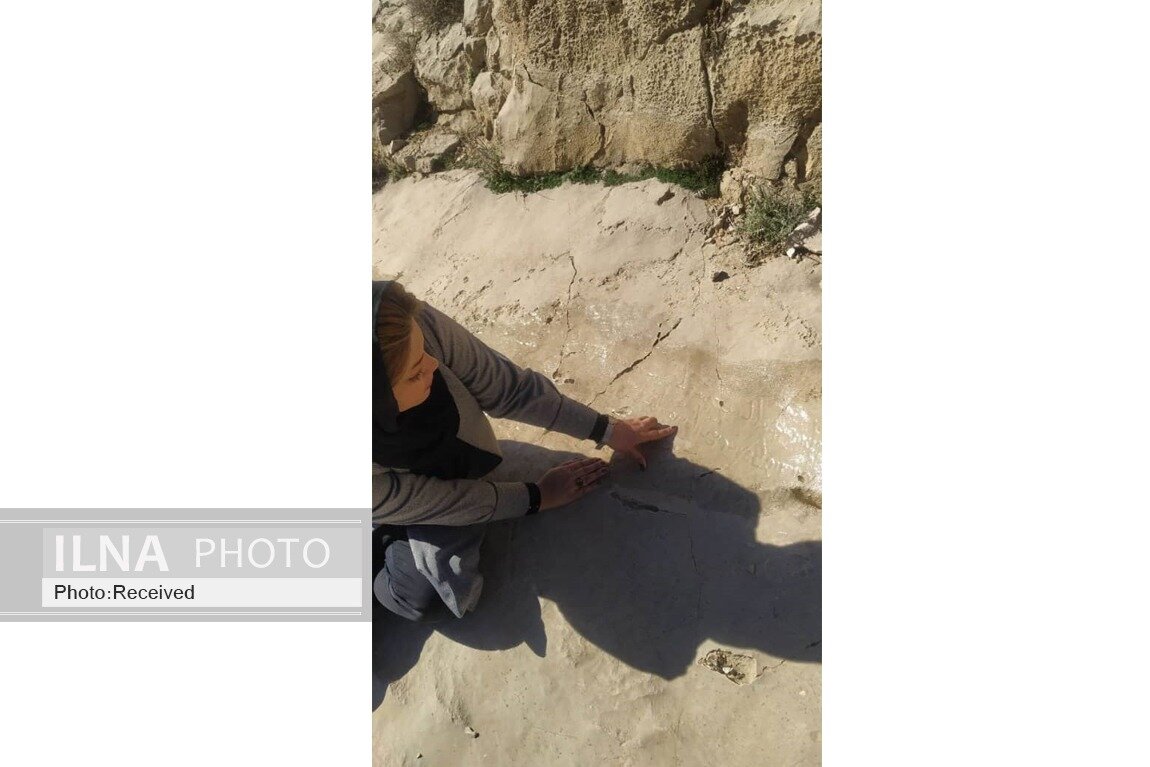Sassanid petroglyph deciphered after 45 years

TEHRAN – It took 45 years for a Sassanid-era (224–651) petroglyph to be deciphered, ILNA reported on Saturday.
Forty-five years after its discovery in Naqsh-e Rostam, a royal rock-hewn necropolis in southern Fars province, the Sassanid petroglyph has been translated, Iranian archaeologist Abolhassan Atabaki said.
Raising goats in pastures is the subject of the petroglyph, he mentioned.
The petroglyph also mentions a nearby hydro structure that the residents of the region used for drinking and cattle water, he noted.
This rock drawing is one of the most important and largest petroglyphs discovered by the archaeologists during their previous survey of the area, he explained.
The petroglyph has been homogenized by rainwater because it was exposed to the open air, causing a large number of limestone sediments to slowly form a layer of the upper surface, resulting in the destruction of stone inscriptions, and the loss of parts of the letters, he added.
One of the wonders of the ancient world, Naqsh-e Rostam, is home to spectacular massive rock-hewn tombs and bas-relief carvings. Moreover, it embraces four tombs where Persian Achaemenid kings are laid to rest, believed to be those of Darius II, Artaxerxes I, Darius I, and Xerxes I (from left to right facing the cliff), although some historians are still debating this.
The Achaemenid necropolis is situated near Persepolis, itself a bustling UNESCO World Heritage site near the southern city of Shiraz. Naqsh-e Rostam, meaning “Picture of Rostam” is named after a mythical Iranian hero who is most celebrated in Shahnameh and Persian mythology. Back in time, natives of the region had erroneously supposed that the carvings below the tombs represent depictions of the mythical hero.
There are stunning bas-relief carvings above the tomb chambers that are similar to those at Persepolis, with the kings standing on thrones supported by figures representing the subject nations below. There are also two similar graves situated on the premises of Persepolis probably belonging to Artaxerxes II and Artaxerxes III.
Beneath the funerary chambers are dotted with seven Sassanian eras (224–651) bas-reliefs cut into the cliff depict vivid scenes of imperial conquests and royal ceremonies; signboards below each relief give a detailed description in English.
At the foot of Naqsh-e Rostam, in the direction of the cliff face, stands a square building known as Ka’beh-ye Zardusht, meaning Kaaba of Zoroaster. The building, which is roughly 12 meters high and seven meters square, probably was constructed in the first half of the 6th century BC, although it bears a variety of inscriptions from later periods. Though the Ka’beh-ye Zardusht is of great linguistic interest, its original purpose is not clear. It may have been a tomb for Achaemenian royalty or some sort of altar, perhaps to the goddess Anahiti, also called Anahita believed to be associated with royalty, war, and fertility.
In many ways, Iran under Sassanian rule witnessed tremendous achievements in Persian civilization. Experts say that the art and architecture of the nation experienced a general renaissance during Sassanid rule. In that era, crafts such as metalwork and gem engraving grew highly sophisticated, as scholarship was encouraged by the state; many works from both the East and West were translated into Pahlavi, the official language of the Sassanians.
Of all the material remains of the era, only coins constitute a continuous chronological sequence throughout the whole period of the dynasty. Such Sassanian coins have the name of the king for whom they were struck inscribed in Pahlavi, which permits scholars to date them quite closely.
The legendary wealth of the Sassanian court is fully confirmed by the existence of more than one hundred examples of bowls or plates of precious metal known at present. One of the finest examples is the silver plate with partial gilding in the Metropolitan Museum of Art in New York. The dynasty was destroyed by Arab invaders during a span from 637 to 651.
The ancient region, known as Pars (Fars), or Persis, was the heart of the Achaemenid Empire founded by Cyrus the Great and had its capital in Pasargadae. Darius I the Great moved the capital to nearby Persepolis in the late 6th or early 5th century BC. Alexander the Great defeated the Achaemenian army at Arbela in 331 and burned Persepolis apparently as revenge against the Persians because it seems the Persian King Xerxes had burnt the Greek City of Athens around 150 years earlier.
Persis became part of the Seleucid kingdom in 312 after Alexander’s death. The Parthian empire (247 BC– 224 CE) of the Arsacids (corresponding roughly to the modern Khorasan in Iran) replaced the Seleucids' rule in Persis during 170–138 BC. The Sasanid Empire (224 CE–651) had its capital at Istkhr. Not until the 18th century, under the Zand dynasty (1750–79) of southern Iran, did Fars again become the heart of an empire.
ABU/AM
